The gardens are generally looking fine.

Kidney Beds 6th June
Though frankly if they didn’t during June, I might as well give up and get a proper job.

Kidney Beds 26th June
But the Kidney Beds are in dire need of a major revamp. They were cobbled together five years ago with a few sitting tenants, some plants from my garden, gifts from friends and impulse buys. I’ve added all sorts of ‘stuff’ since then.

Kidney Beds 20th June
And I have been fairly pleased with how they’ve performed whilst I concentrated on other parts of the garden. But (and yes, I say it every year) their time has come: in the autumn I am going to strip them out, simplify and replant.

And the same goes for you, Long Borders. I now have enough mature, bulky plants to make a bolder, less bitty design and give space to swamped, under-performers. In the early days, my main concern was filling bare soil but now I’m looking forward to a full frontal assault on all four borders with digging-fork, spade, mattock, bow-saw and grin.

During June the Tropical Border gets under way. And this is a border which I did plan and plant from scratch – and that I really enjoyed. I’ll do a post later in the summer on how it has developed this year; which plants I’ve added … and which I’ve deleted.

6th June
Some plants in the garden don’t need much attention; the Hydrangea petiolaris on the front wall of the house for example. I deadhead it (a little), cut growth creeping over windows and into the roof but otherwise leave it to its own slow devices.
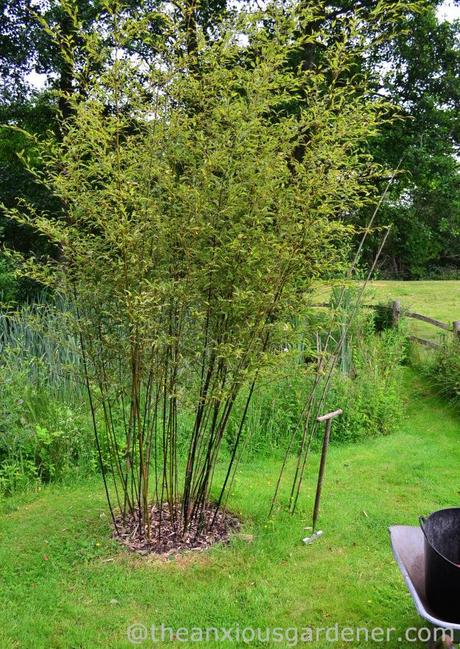
Some plants left unwatched will mis-behave. This black bamboo (Phyllostachys nigra) was about two foot tall and a foot across (and mostly dead) when I rescued it from a garden center bargain basement. I homed it in a quiet, mostly unvisited, unseen corner of the garden five or six years ago. It has a clearly defined planting pocket but has chosen to throw out three new canes into the surrounding grass. I didn’t really have time to enlarge the ‘pocket with an edging iron but had to save those three large new shoots. Then, on hands and knees, I lifted away the turf. And goodness but didn’t half jump when I uncovered this:
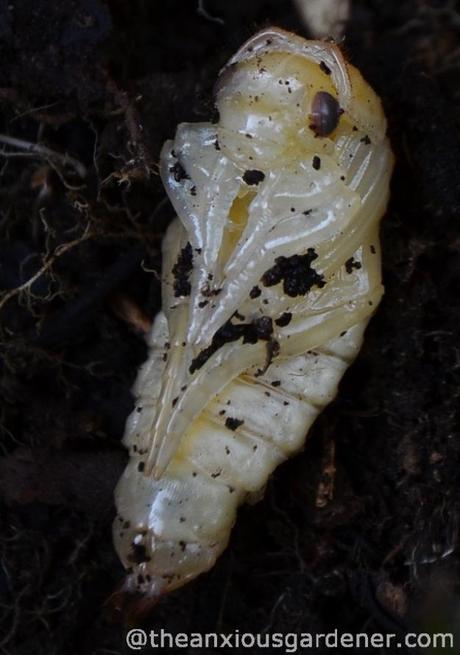
I have no idea what it is – looks rather like something Quatermass would have unearthed: an inspiration for H R Giger’s Alien.
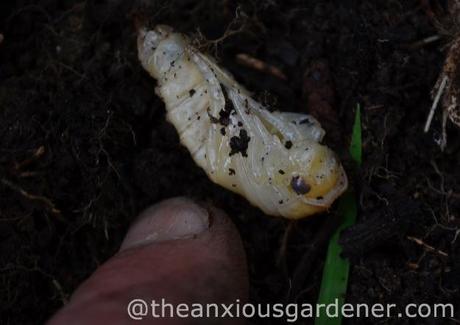
I was fascinated and especially so by the larva leaping about like a Mexican jumping bean.
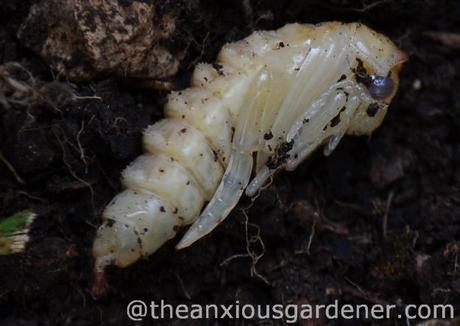
I hastily re-buried it and wondered what it would pupate into and what would eventually emerge from deep within the bamboo. And whether it’ll bear a grudge.
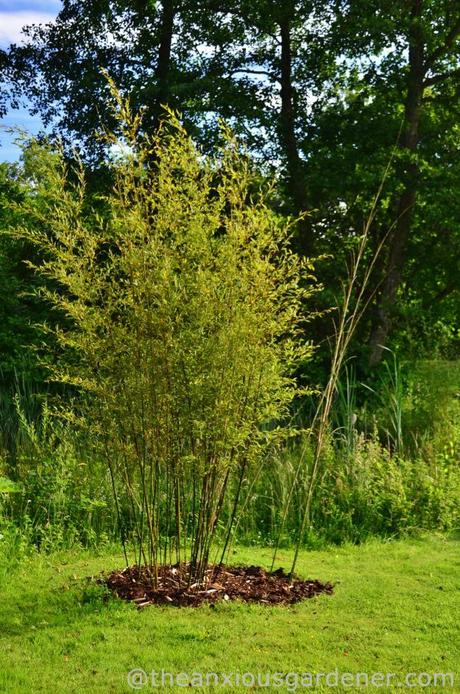
I fed and re-mulched the bamboo and happily counted 20 new canes – normally it produces a dozen. (The new canes are green but gradually darken to black over the course of a year). I remove thinner, older canes as new, thicker ones grow and strip off the lower leaves to show-off the black.
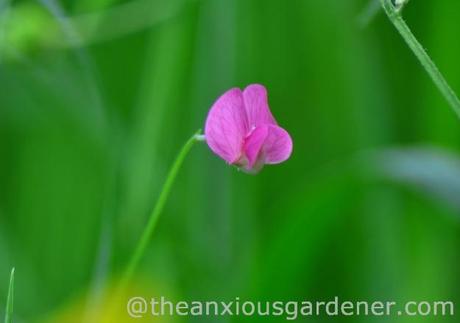
I haven’t seen grass vetchling (Lathyrus nissolia) on the meadow since 2011 - though I look every year. In early June it was back in several large-ish patches. I think it perfect.
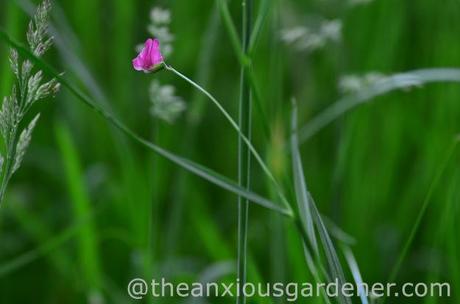
And it does grow from what looks like grass, rather than the usual pea-like vetch leaves – hence its name.
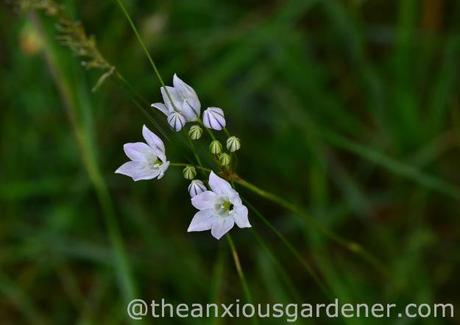
And does anyone know what this is? I’ve tried and failed to identify it. It appeared in un-mown grass by the greenhouses.
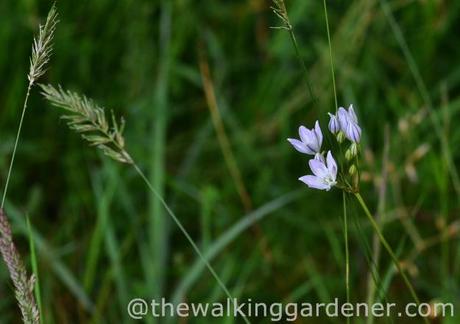
I think it is an allium but where has it come from? It isn’t anything I’ve introduced. Pretty though.
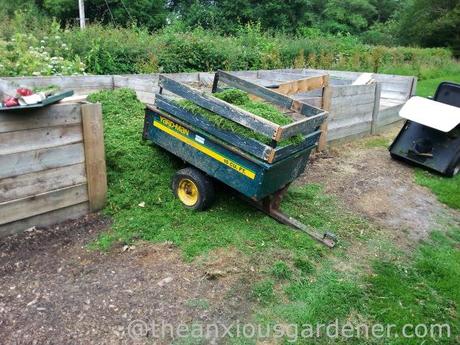
Grass grows so very quickly during May and June that mowing seems endless. Actually, no mowing is endless. But Hallelujah! The recent lack of rain has finally put a stop to that inch of new growth every few days. Mowing is hard, hot and pretty boring work – my method of emptying the trailer into the compost bins doesn’t make it any easier.
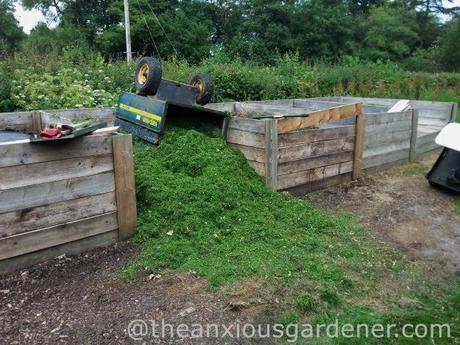
That full trailer is very heavy to tip over and I can have five or six to empty a day. (I save a pretty penny on gym fees). Mowing operations are slowed and interrupted by languid bumbles and distracted honey bees. (I can’t mow a bee; call me old-fashioned). I stop and nudge them gently with the front of the mower, so entranced are they by flowering clover.
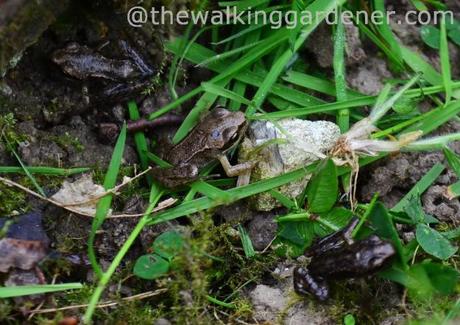
But what has truly slowed grass-cutting down this year are froglets. Dozens upon dozens of them and they’re just the ones I notice. I reckon there must be thousands this year, especially in the meadow and along the pond fringes and ditches where the grass is damper. As I mow, or even just walk about, they hop about my approaching feet or wheels – like miniature firecrackers. But often they don’t actually get out of my way and again I stop the mower, gather them up or shoo them them safely to one side. (I can’t mow a frog: call me old-fashioned).

Here’s a small gang I disturbed when lawn-edging.
I’ve started harvesting new potatoes, cucumbers, sprouting broccoli, salad leaves and radishes. But the Priory’s bumper crop this year is froglets.

